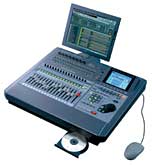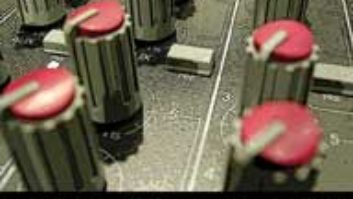

As I write this, I’m amid a whirl of preparations surrounding the release of my new album, Burning Daylight, recorded almost entirely on the Roland VS-2480 workstation. Working with legendary producer Phil “Butcher Bros.” Nicolo, we tracked the drums to 2-inch, made a digital slave and then tracked the rest of the album on the 2480. Later, we married my finished tracks back to the original drums on the 2-inch and mixed from there. The result has been phenomenal, giving me a unique opportunity to talk about using this tool to bridge the analog and digital worlds.
TEACHING YOUR EYES TO HEAR
On a recent live record that I produced, capturing the spirit of the performance was everything. However, in couple of spots, I wanted to fix the lead vocal without compromising the energy of the take. So back in the studio, I used the real-time analyzer on the 2480 to match the frequency response from the microphone that was used the night of the show to the microphone we would be using for fixes. Because the 2480’s analyzer accurately combined what I was hearing and seeing (especially looking in the 1.8k to 2.6k range), I was able to equalize to a point where we could punch the offending moments without any risk of them suddenly popping out of the track. Successfully tucking those spots back into the ambience of the room mics gave the entire vocal a natural body.
REMEMBER THE INTERFACE, FORGET THE MOUSE
I’m constantly trying to avoid the sterility and coldness that digital recording unvaryingly supplies by employing analog techniques even when I’m working exclusively in a digital medium. I need faders. I need buttons. I want to interact with the music I’m making, using something other than a mouse. The 2480 supplies 17 motorized faders and assignable knobs, so take advantage of the interface and try using the 2480 like an actual mixing board. If you need to ride the lead vocal, then do it by hand. The 2480’s Automix mode is nondestructive, so you can re-take your moves as many times as you want, listening as you go. It may be easier to assign a concave auto-fade curve to that ringing crash cymbal, but doing it by hand adds an intangible human quality to even the smallest facets of your recording.
AN EXTRA TWO CENTS (OR 15) LETS YOU KEEP THE CHANGE
What could have more character than the sound of an old toy piano that’s been in your attic for 20 years? Certainly not the MIDI-triggered sample you were about to use. The problem is that the sample is perfectly in tune, while the real thing varies its tuning from note to note. Time for a handy insert-and-effect trick to preserve the character of the instrument while solving the pitchy-ness.
On input, insert one of the 2480’s many vocal multipatches. Scroll over to the pitch-shifter parameter and turn off the other parameters. Turn the direct signal down to zero and turn the effected signal up to full. You now have a finely tuned pitch-shifter that you can manipulate in real time. Hold down the Shift button while dialing the jog wheel; you’ll be shocked at how accurately it fixes that B-flat that’s 15 cents more out of tune than the rest. By doing this as you track the part, the musician hears the instrument in tune and can focus on the performance, which is where the real magic happens.
ONE OF MY PET SOUNDS: MONO
Brian Wilson was on to something. One of the easiest things you can do to give your 2480 recordings real depth in stereo is to use some of its features in mono. Start with one of the provided tape delay presets, make the slapback long, but with a short amount of repeats, and strap it into one of your stereo buses. Add as much distortion as the preset allows and then flip the switch on the bus to mono. Blend this with a nice, warm stereo reverb, and you’ll find that the vocal (or anything else you try this on) suddenly has focus, but with an old-school fuzziness thanks to the mono-double the delay provides. For an even wilder effect, try the same thing with reverb and pan that right behind the signal source. Do this enough and you’ll get elements fading off in different directions, which can make the overall mix sound even more stereo.
By using the same equipment everyone else has in ways no one else does, your music will sound more interesting and will stand apart. People are often surprised at my seemingly low-tech approach in such a high-tech medium, but in the end, the secret to making your music sound like music instead of a stream of ones and zeros is to treat it, well, like music.
Blake Morgan is a recording artist, producer and owner/president of Engine Company Records (www.enginecompanyrecords.com).

For Roland’s image gallery and demo video, click
here

